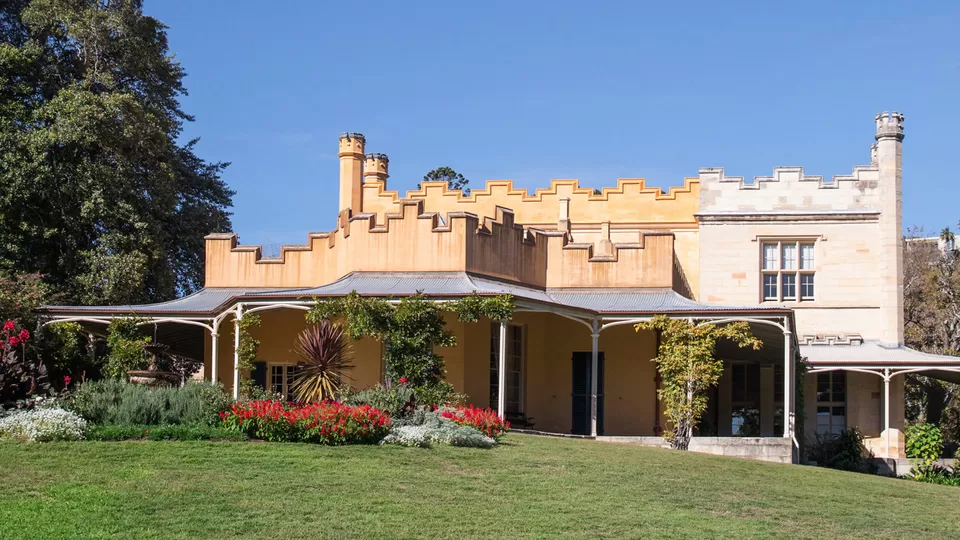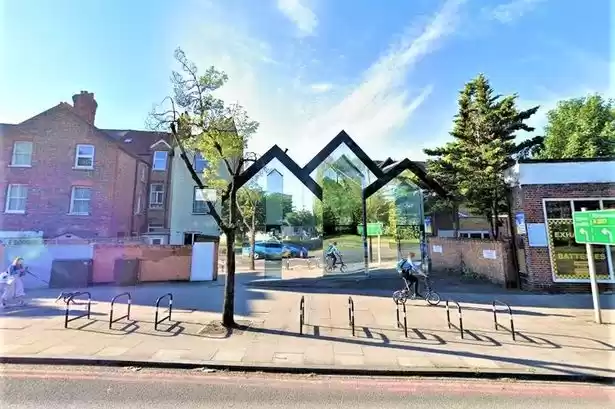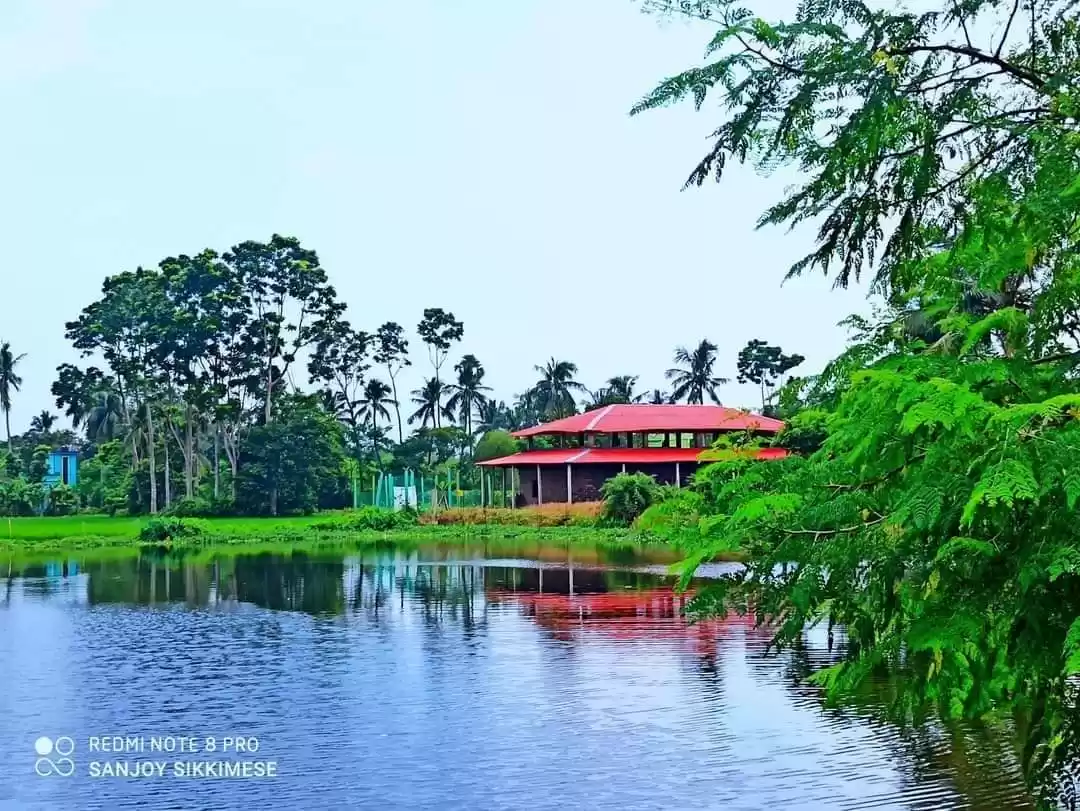Have you ever wondered what it was like to live in a grand colonial mansion surrounded by lush gardens and stunning views of the harbour? If so, you should visit Vaucluse House, one of Sydney's most impressive and well-preserved heritage sites. Vaucluse House is a former residence, farm, and country estate of the influential Wentworth family, who played a key role in shaping the history and culture of Australia. Today, Vaucluse House is a tourist attraction, a house museum, and a public park, where you can explore the elegant rooms, the expansive grounds, and the fascinating stories of the people who lived and worked there.
In this article, we will take you on a virtual tour of Vaucluse House, and show you why it is a must-see destination for anyone interested in history, architecture, nature, or simply a relaxing day out.

History of Vaucluse House
Vaucluse House was built in the 1830s by William Charles Wentworth, one of the most prominent figures in Australian history. Wentworth was a lawyer, politician, explorer, and writer, who championed the cause of self-government, civil rights, and education for the colony of New South Wales. He was also a wealthy landowner, who acquired a large estate in the eastern suburbs of Sydney, where he built his family home, Vaucluse House. The name Vaucluse was inspired by the French town of the same name, where the poet Petrarch lived in the 14th century.
Vaucluse House was designed in the Gothic Revival style, which was popular in England at the time. The house features sandstone walls, slate roofs, verandahs, bay windows, and fireplaces, creating a romantic and picturesque appearance. The house was also equipped with modern conveniences, such as gas lighting, hot water, and a telephone. The house was extended and renovated several times over the years, reflecting the changing tastes and needs of the Wentworth family.
The Wentworth family lived in Vaucluse House until 1853, when they moved to England. The house was then leased to various tenants, including the French consul, the Italian ambassador, and the governor of New South Wales. In 1911, the house and the estate were purchased by the state government, and in 1915, Vaucluse House was opened to the public as a museum. The house was furnished and decorated with original and period items, recreating the atmosphere of the 19th century. The house is now managed by Sydney Living Museums, a network of museums and historic houses in Sydney.

Architecture and Gardens of Vaucluse House
Vaucluse House is not only a remarkable example of colonial architecture, but also a showcase of the diversity and beauty of the Australian flora and fauna. The house is surrounded by 10 hectares of gardens and grounds, which include formal gardens, kitchen gardens, orchards, lawns, ponds, and stables. The gardens and grounds of Vaucluse House reflect the different influences and purposes of the owners and occupants over the years, such as the English landscape style, the Victorian horticulture, and the Aboriginal culture.
The formal gardens are located in front of the house, and feature geometric patterns, symmetrical designs, and ornamental plants. The formal gardens were created by the Wentworth family, who wanted to impress their guests and display their wealth and status. The formal gardens include a circular driveway, a fountain, a sundial, and a variety of flowers, such as roses, camellias, and lavender.
The kitchen gardens are located behind the house, and provide fresh produce, herbs, and flowers for the house. The kitchen gardens were established by the Wentworth family, who wanted to be self-sufficient and enjoy the bounty of the land. The kitchen gardens include vegetable beds, fruit trees, bee hives, and a greenhouse.
The orchards are located on the lower slopes of the estate, and produce a variety of fruits, such as apples, pears, peaches, plums, and figs. The orchards were planted by the Wentworth family, who wanted to diversify their crops and experiment with new varieties. The orchards also provide habitat and food for many birds, such as cockatoos, lorikeets, and rosellas.
The lawns are located on the upper slopes of the estate, and offer panoramic views of the harbour and the city. The lawns were created by the Wentworth family, who wanted to create a leisure space for their family and friends. The lawns are ideal for picnics, games, and events, such as the annual Christmas Fair.
The ponds are located near the entrance of the estate, and are home to a variety of aquatic life, such as fish, frogs, turtles, and eels. The ponds were created by the Wentworth family, who wanted to enhance the beauty and water supply of the estate. The ponds are also a cultural and spiritual site for the Birrabirragal people, the traditional owners and custodians of the land where Vaucluse House is located. The Birrabirragal people have a strong connection to the water and the eels, and celebrate their culture and heritage with the annual Eel Festival.
The stables are located near the house, and house the horses, carriages, and equipment of the estate. The stables were built by the Wentworth family, who wanted to maintain their transport and farming needs. The stables also house the servants and workers of the estate, such as the coachman, the gardener, and the dairy maid. The stables offer a glimpse into the lives and roles of the people who supported and maintained Vaucluse House.

Events and Exhibitions at Vaucluse House
Vaucluse House is not only a historic and natural attraction, but also a vibrant and dynamic venue for events and exhibitions. Vaucluse House hosts a range of events and exhibitions throughout the year, catering to different interests and audiences. Some of the current and upcoming events and exhibitions at Vaucluse House are:
- Convict Kids: A fun and educational program for children aged 5 to 12, where they can experience what it was like to be a convict child in the 19th century. They can dress up in convict clothes, play convict games, do convict chores, and learn about convict history and culture. Convict Kids runs every Sunday from 10am to 12pm, and costs $15 per child. Bookings are essential.
- Eel Festival: A cultural and environmental festival that celebrates the eels and the Birrabirragal people of the Eora Nation. The festival features live music, dance, storytelling, art, food, and workshops, as well as eel trapping and tasting. The Eel Festival is held every March, coinciding with the eel migration season. The festival is free and open to all.
- Christmas Fair: A festive and family-friendly event that transforms Vaucluse House into a Christmas wonderland. The event features a Christmas market, a Santa's grotto, a petting zoo, a pony ride, a jumping castle, a face painting, and a live entertainment. The Christmas Fair is held every December, and costs $5 per person or $15 per family. No bookings are required.
- Sydney Open: A rare opportunity to explore the hidden and secret spaces of Vaucluse House, such as the cellar, the attic, the tower, and the mausoleum. The event also includes guided tours, talks, and demonstrations, as well as access to other historic buildings and sites in Sydney. Sydney Open is held every November, and costs $49 per person or $44 for members. Bookings are recommended.

Location and Accessibility of Vaucluse House
Vaucluse House is located at 69a Wentworth Road, Vaucluse, NSW 2030. You can contact Vaucluse House by phone at (02) 9388 7922 or by email at vaucluse.house@slm.com.au. You can also visit the official website of Vaucluse House at https://sydneylivingmuseums.com.au/vaucluse-house or follow them on Facebook, Instagram, and Twitter.
You can get to Vaucluse House by public transport, car, bike, or foot, depending on your preference and convenience. Here are some of the options:
- By public transport: You can take a bus from the city centre or the eastern suburbs to Vaucluse House. The bus routes that stop near Vaucluse House are 324, 325, and 380. The nearest bus stop is Vaucluse Road near Wentworth Road, which is a 5-minute walk from Vaucluse House. You can check the bus timetables and fares at https://transportnsw.info.
- By car: You can drive to Vaucluse House from the city centre or the eastern suburbs via New South Head Road and Old South Head Road. The drive takes about 20 to 30 minutes, depending on the traffic. You can park your car at the free car park near the entrance of Vaucluse House, or at the paid car park at Nielsen Park, which is a 10-minute walk from Vaucluse House.
- By bike: You can cycle to Vaucluse House from the city centre or the eastern suburbs via the scenic coastal route. The cycle takes about 40 to 60 minutes, depending on your speed and fitness level. You can enjoy the views of the harbour, the beaches, and the cliffs along the way. You can park your bike at the bike racks near the entrance of Vaucluse House, or at the bike racks at Nielsen Park, which is a 10-minute walk from Vaucluse House. You can check the bike paths and facilities at https://cityofsydney.nsw.gov.au/explore/getting-around/cycling.
- By foot: You can walk to Vaucluse House from the nearby suburbs, such as Watsons Bay, Rose Bay, or Double Bay. The walk takes about 20 to 40 minutes, depending on your pace and distance. You can follow the signs and the footpaths to Vaucluse House, or take the scenic Hermitage Foreshore Walk, which passes by Vaucluse House. You can check the walking routes and maps at https://www.sydneycoastwalks.com.au/hermitage-foreshore-walk/.

Vaucluse House is accessible and welcoming to all visitors, regardless of their abilities, needs, or preferences. Vaucluse House offers the following accessibility features and services:
- Ramps and lifts to access the ground floor and the first floor of the house
- Wheelchairs and mobility scooters available for loan at the reception
- Audio guides and sign language interpreters available for tours and events
- Large print and braille guides available for the house and the gardens
- Accessible toilets and baby changing facilities available near the entrance
- Assistance animals welcome in the house and the grounds
- Sensory-friendly sessions and activities available for visitors with autism or sensory sensitivities
Vaucluse House is located on the land of the Birrabirragal people of the Eora Nation, who have lived and cared for this place for thousands of years. We acknowledge and pay respect to their elders past, present, and future, and to their continuing connection to the water, the land, and the culture. We invite you to join us in celebrating and learning from their rich and diverse heritage.
Conclusion
Vaucluse House is a historic, cultural, and natural attraction in Sydney, that offers a unique and memorable experience for visitors of all ages and backgrounds. Vaucluse House is more than just a house, it is a story of a family, a community, and a nation, that spans over two centuries and continues to this day. Whether you are interested in history, architecture, nature, or simply a relaxing day out, Vaucluse House has something for everyone.

















